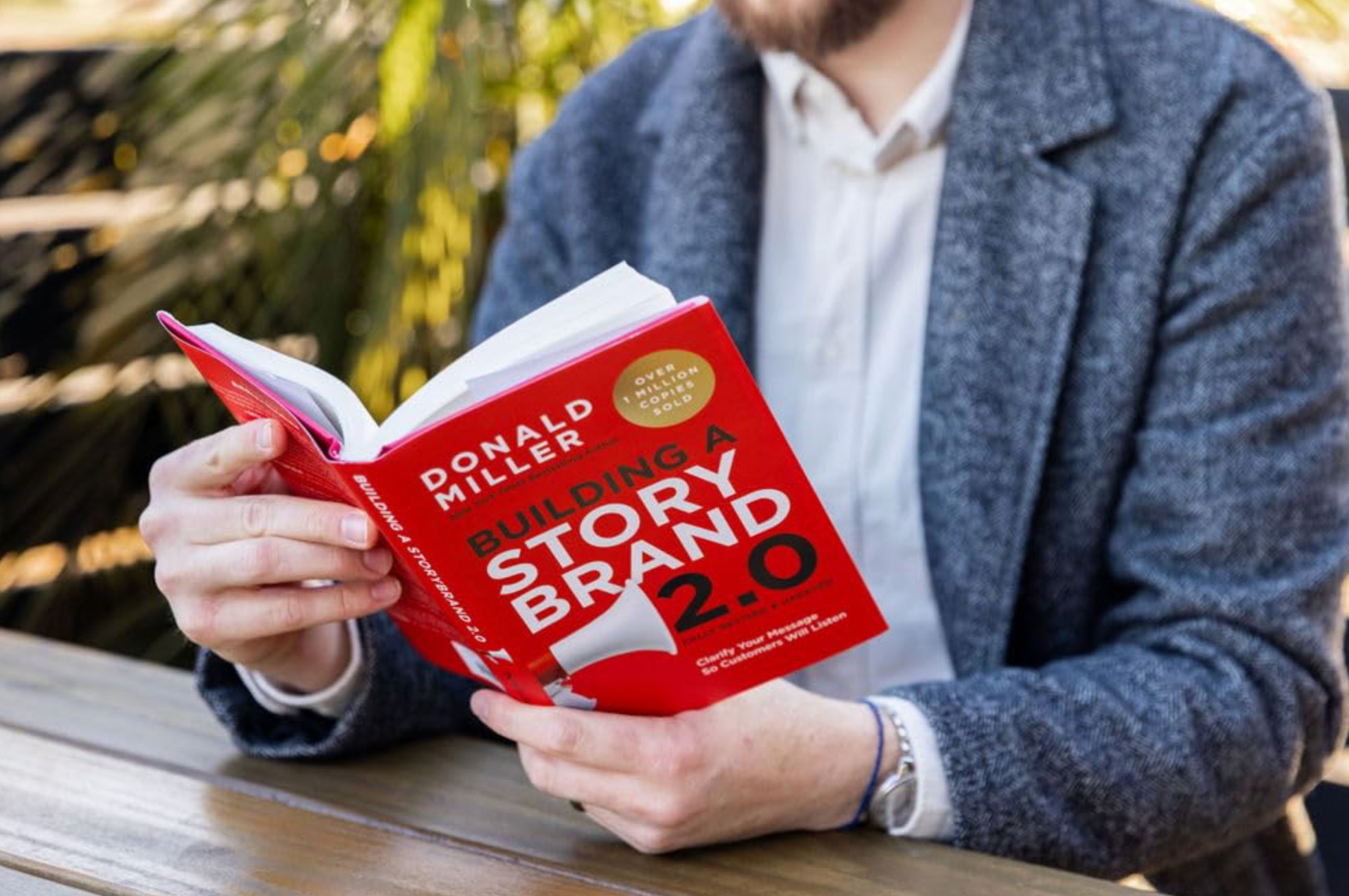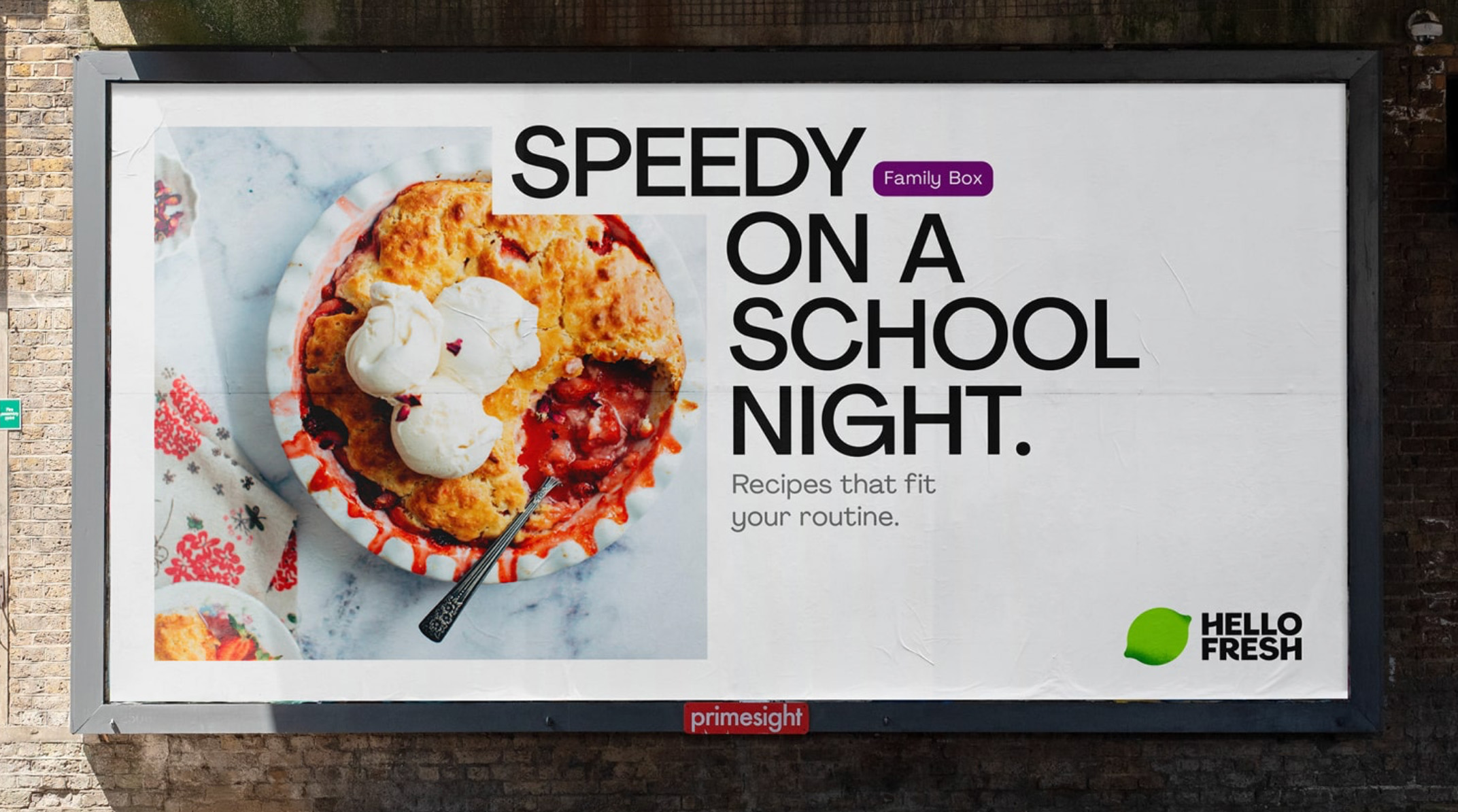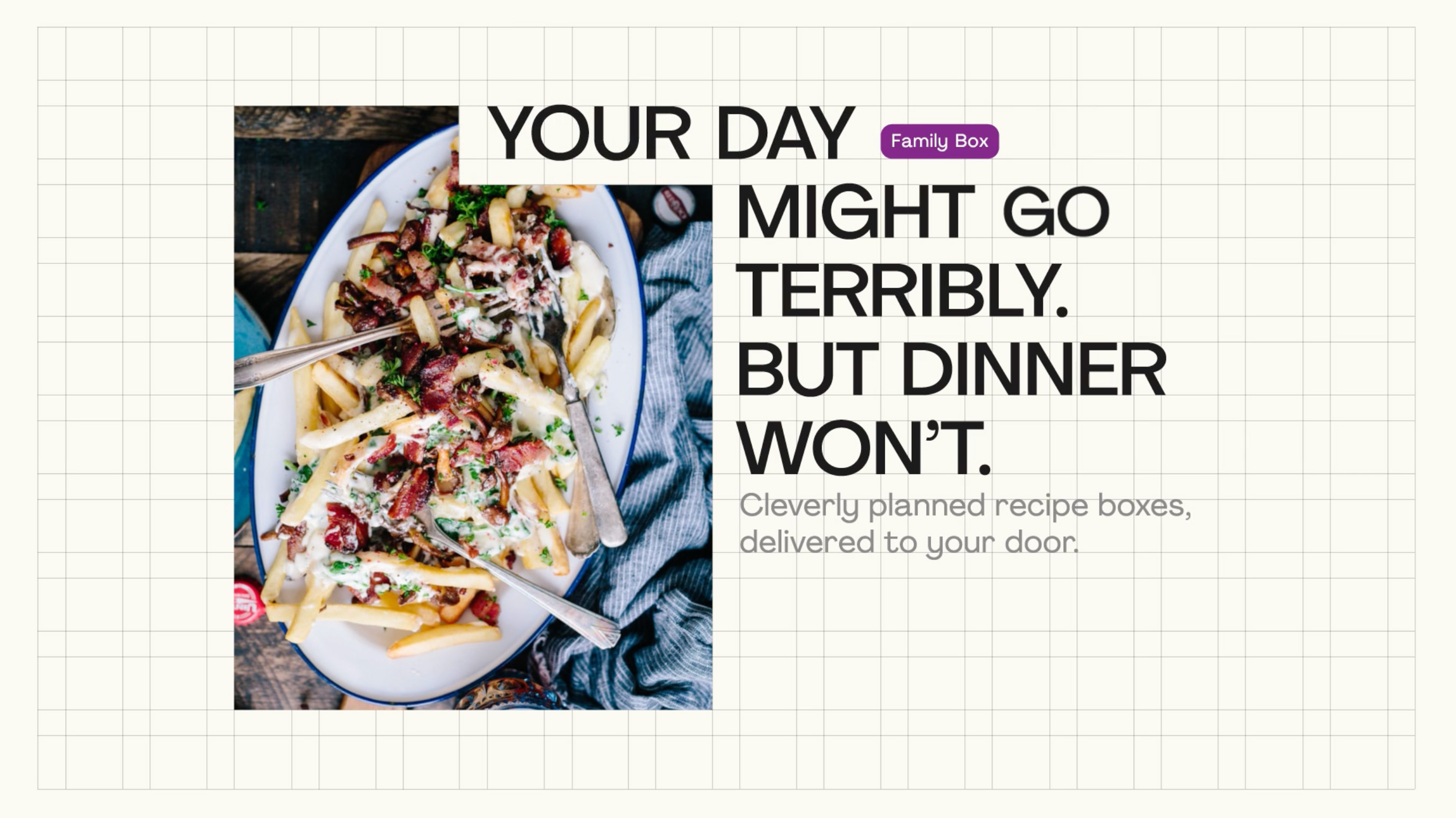Brand Story — Turning clarity into connection
If your growth has plateaued, the problem isn’t your product. it’s your story. Customers may know what you do, but if they don’t feel why it matters, they won’t move. A clear brand story makes your business easy to understand, remember, and choose. Using the StoryBrand framework and HelloFresh as a case study, this article shows how to turn clarity into connection, and connection into growth.
You’ve done the work. You know who your customers are. You’ve uncovered the insights that show what they actually care about (Session 2). Now comes the part where most brands either make the connection… or lose it. The difference? Story.
Brand story: The bridge between clarity and conversion
A great brand story takes what you know about your audience and turns it into something they can feel, not just understand. Without it, you’ve just got a list of facts. With it, you’ve got a narrative that: Draws people in before you’ve even made an offer. Makes them the hero, not you. Builds trust and urgency without feeling “sales-y.”
When you get your story right, your brand stops being just another option in the market. It becomes the one customers want to remember, talk about, and choose.
“Messages delivered as stories can be up to 22 times more memorable than facts alone.” —Source: Cognitive psychologist Jerome Bruner
What a brand story is (and isn’t)
Let’s clear something up. A brand story is not your origin story. It’s not a blog post about “how we started in a garage.” It’s not a paragraph you hide on your About page. A brand story is a strategic narrative that:
- — Frames your customer as the hero with a clear goal.
- — Positions you as the guide with the plan they need.
- — Shows the stakes, what they’ll gain or lose.
- — Ends in transformation they actually want.
And it’s not something you “write once.” It’s the through-line that runs across your website, sales decks, ads, onboarding, emails, and even how your team answers the phone.

The cost of a missing out
When you skip building a clear brand story, the same problems keep showing up:
1. Inconsistent messaging
— Sales says one thing, marketing says another, and your website says something else.
2. Confused prospects
— Customers don’t understand what you do or why it matters to them.
3. Price-based competition
— If your story doesn’t differentiate you, customers default to the cheapest option.
The result? Slower sales cycles. Lower close rates. Higher acquisition costs. Story isn’t decoration, it’s the structure that makes everything else work.
Brands with consistent storytelling see revenue increases of up to 23% compared to those with inconsistent messaging — Demand Metric.
The 7-Part Narrative
One of the most practical ways to build a brand story is Donald Miller’s StoryBrand framework. It works because it borrows from the oldest, most powerful communication pattern humans know: storytelling.

Every blockbuster movie, bestselling novel, and myth across cultures uses the same arc — a hero on a journey. When you apply that same arc to your brand, your message stops sounding like corporate noise and starts resonating like a story people want to follow. Here’s the breakdown — and why each step matters:
1. A character (the Hero)
This is not you. The hero is your customer. They’re the one with a goal to achieve, a problem to overcome, or a desire for transformation. If your brand story puts you in the hero’s seat, you lose people immediately, because customers don’t see themselves in it.
2. Has a problem
Every good story needs conflict. In branding, this plays out at three levels:
- External Problem: The surface-level, practical issue.
- Internal Problem: The frustration or stress caused by that issue.
- Philosophical Problem: The deeper “this shouldn’t be this way” belief.
-
- Brands that only talk about the external problem stay forgettable. Brands that also name the internal and philosophical layers feel human and relevant.
3. Meets a guide
This is where your brand enters. Not as the hero, but as the guide. Guides do two things: Show empathy: “We understand what you’re going through.” Show authority: “We’ve helped others like you, and we know how to fix it.” When your brand consistently demonstrates both, customers trust you to lead them.
4. Who gives them a plan
Heroes don’t act without a roadmap. A good plan removes confusion and creates confidence. The plan should be:
- Simple (three to four steps, maximum). Clear (no jargon, no over-complication). Actionable (every step feels doable right now). Without a plan, even the most interested prospect stalls.
5. And calls them to action
In every story, the hero needs a push. In business, that’s your Call to Action (CTA).
There are two kinds: Direct CTAs: “Buy now,” “Schedule a call,” “Sign up today.” Transitional CTAs: Lower-commitment actions like “Learn more” or “Download a guide.” The best brands always use both, because not every customer is ready for the big leap immediately.
6. That helps them avoid failure
Every great story has stakes. Without the risk of failure, there’s no urgency. Your brand story needs to make clear what’s at risk if customers don’t act, whether it’s wasted time, higher costs, missed opportunities, or ongoing frustration.
7. And ends in success
Finally, you must paint a vivid picture of what success looks like for the customer. Not just the absence of the problem, but the presence of transformation. Show them the better version of themselves, their business, or their life. Make the success clear, emotional, and desirable.
When you put your brand into this structure, your message stops being scattered. Instead of overwhelming people with disconnected claims and features, you give them a story they instantly understand, remember, and want to step into.
That’s how a clear story turns into a competitive advantage.
HelloFresh: A brand story done right
When HelloFresh launched, they weren’t the only meal kit company. In fact, they weren’t even the first. But they told their story better.

1. The Character
The HelloFresh customer isn’t “everyone who eats.” They’re busy professionals, parents, or couples who:
- Want to eat fresh, healthy meals. Hate wasting time on meal planning and grocery shopping. Feel guilty about resorting to takeout or ready-meals. HelloFresh puts them at the centre, not the product.
2. The Problem
- External: Grocery shopping and meal prep take too much time.
- Internal: Decision fatigue, “What’s for dinner?” becomes a daily stressor.
- Philosophical: People should be able to enjoy a fresh, home-cooked meal without the hassle.
3. The Guide
HelloFresh steps in with empathy: “We get it. Dinner shouldn’t be stressful.” And authority: Number one meal kit globally. Millions of meals delivered each week. Proven recipes tested for taste and ease.
4. The Plan
They make it ridiculously simple:
- Pick your meals online.
- Receive fresh, pre-portioned ingredients.
- Cook delicious meals in 30 minutes or less.
No jargon. No complicated steps.
5. The Call to Action
- Direct: “Get started.” Transitional: “See this week’s menu.” Both keep the decision low-friction.
6. The Stakes
Without HelloFresh, you risk: More takeout. More wasted time in grocery aisles. More half-used ingredients going in the trash. With HelloFresh, you get: Time back. Fresher meals. A sense of control over your week.
7. The Success
They don’t just sell food. They sell: More family time. The pride of cooking at home. Less stress at the end of the day.
HelloFresh’s Core Brand Statement:
“We help busy people cook fresh, delicious meals at home so they can save time, eat better, and enjoy life more.”
Notice: it’s not about them being “innovators in meal delivery logistics” — it’s about the customer’s transformed life.

How to build your story step-by-step
If you’ve already done your Insight work from Session 2, this is the next step.
- Identify your hero. Be specific — who exactly is your ideal customer?
- Define their problem. Write down external, internal, and philosophical layers.
- Position yourself as the guide. Show empathy (“We understand…”) and authority (“We’ve helped…”).
- Create a simple plan. 3–4 steps maximum.
- Make the stakes clear. What happens if they don’t act? What happens if they do?
- Paint the success. Use emotional language — they need to feel it.
- Write your brand statement. “We help [X] do [Y] so they can [Z].”
Common mistakes to avoid
- Making yourself the hero. Nobody buys from a brand that only talks about itself.
- Being vague about the transformation. “Better service” means nothing without detail. Overcomplicating your plan. Complexity kills action. Changing the story depending on the channel. Keep it consistent everywhere.
Where Your Story Should Show Up
Your brand story isn’t just for the homepage hero section. It should be baked into:
- — Sales presentations.
- — Ad headlines.
- — Email campaigns.
- — Onboarding sequences.
- — Social captions.
- — How your team explains what you do at a party.
Every time your brand speaks, it should be telling the same story, because repetition builds memory, and memory drives trust.
From clarity to connection
By now, you’ve seen the pattern:
- Session 1: Vision gave you the why that sets your direction.
- Session 2: Insights gave you the what to say based on your audience’s reality.
- Session 3: Story gives you the how to say it so it sticks.
Story is what moves your brand from being understood to being chosen.
When your customers can retell your story in their own words — and they like how they sound saying it — you’ve won.
Want help building your brand story?
Book a free discovery call and we’ll walk you through the exact steps successful brands like HelloFresh use to keep their story clear, consistent, and impossible to ignore.

Connecting
brands to
customers
for 19 years
2006 - 2025
N —
Nineteen years ago, we started with one mission: build brands that break through.
I —
It wasn’t about being the biggest, but the boldest
N —
Names, narratives, and identities, crafted to punch above their weight.
E —
Every project, a new challenge. Every brand, a new fight worth showing up for.
T —
Through shifts and time zones, we stayed true with clarity, speed, impact.
E —
Egos aside, it’s always been about the work—and the people brave enough to back it.
E —
Every client, partner, and teammate—past and present—shaped this journey.
N —
Now, 19 years in. This isn’t a milestone. It’s a launchpad.




